Home
 Introduction
Introduction Around Things to See
Around Things to See
Around Things to See

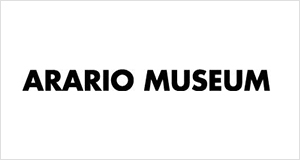
-
1Arario Museum
A museum based on the Arario Collection which encompasses the range of modern art from the East and the West. Buildings previously used as offices, a movie theater, and accommodations in both Seoul and Jeju were renovated for rebirth as a Museum of Art. Based on the concept of a ‘personal collection’ art museum, something which is still unfamiliar in Korea, the Arario displays unique art pieces with strong personal character.
Location
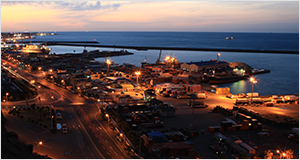
-
2Pier
Located in Geonip-dong, Jeju City, the pier provides domestic ferry services to Mokpo, Wando, Chuja, Yeosu, and other destinations.
Location
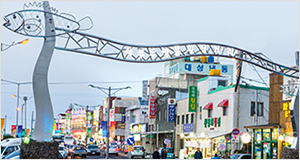
-
3Quality Raw Fish Street on West Pier
The original Raw Fish Street with 45 years of tradition. Display of food ingredient origins is strictly required and the West Pier provides the best customer service.
The beautiful night sea view and the cool sea breeze blowing in from over the seawall, and tile fresco depicting the Jeju Sea make the Quality Raw Fish Street on West Pier a popular spot for both tourists and locals. Conveniently located for tourists, as it is only 10 minutes away from the airport.
Location
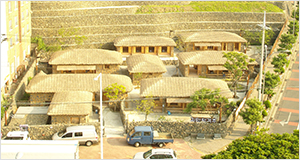
-
4Man-duk Kim Commissioning Agency Site
Located about 200 m from the Man-duk Kim Memorial. There are many sights here where visitors can get a glimpse at old Jeju village life with the Man-duk House and other facilities.
Location
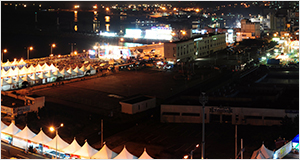
-
5Tap-dong Plaza
Tap-dong Plaza and the outdoor stage by the beach were built on land reclaimed from the sea, and offer a view to the seawall. The well-constructed walk and plaza face the ocean and attracts many tourists and locals with its various cultural events and exhibits.
Location
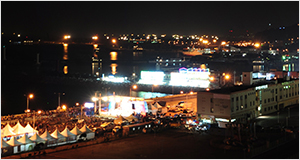
-
6Tap-dong Outdoor Stage by the Beach
Located in the heart of Tap-dong, the outdoor stage is one of the three major attractions Tap-dong offers, along with the plaza and the seawall.
The 3-storey outdoor stage by the beach is in the form of a Jeju stone pagoda, which is a circular shape with a pile of rocks that was placed around village boundaries or empty locations to prevent bad luck and evil from entering.
Location
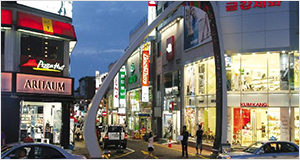
-
7Chilseong-ro
Jeju’s Myeong-dong, Chilseong-ro has traditionally been a major commercial and shopping district. The name came from Bukdu Chilseong, or the Big Dipper, and includes the Sanjicheon Music Fountain with star-shaped lighting facilities and a water playground, which makes this place a popular dating area for young adults.
It is near Black Pork Street and Sanjicheon Dongmun Marketplace, and is adjacent to the Central Underground Shopping Center.
Location
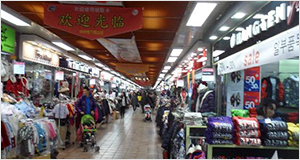
-
8The Central Underground Shopping Center
Located in the heart of Jeju City's downtown, it is the only large shopping mall on Jeju. Stores cover about 20 categories such as clothing, accessories, cosmetics, and shoes, and the mall boasts itself as a place where visitors can enjoy personalized one-stop shopping. (Amenities: breastfeeding facilities, children's play area, stroller/wheelchair service, water purifiers, bidet toilets, customer lockers, a library, etc.)
Location
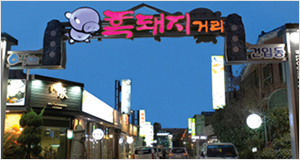
-
9Black Pork Street
Black pork is one of the most sought-after dishes by tourists to Jeju. Black Pork Street is located 10 minutes from the airport and is packed with black pork gourmet restaurants following 30 years of tradition. Black pork is chewier and much more nutritious than “regular” pork. Dipping some pork into an anchovy sauce will give you a light, aromatic flavor experience to stimulate your appetite.
Location
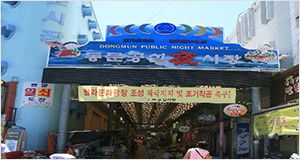
-
10Dongmun Marketplace
Dongmun Public Marketplace is a traditional market of stores based in the Central Underground Shopping Center, Chilseong-ro Shopping Center, and the Sanjicheon Fountain area.
Jeju City's Dongmun Public Market Place is growing in harmony with the fish market, the Central Underground Shopping Center, and the Sanjicheon Fountain area near Chilseong-ro, and provides various sightseeing and eating opportunities, as well as activities.
Location
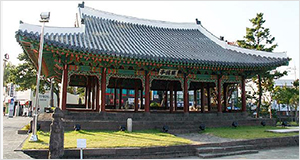
-
11Gwandeok Pavilion
Gwandeok Pavilion is located in the heart of Jeju City, which naturally became the meeting point for people and signposts pointing them in their desired direction; it is a most familiar and friendly place for the locals and is National Treasure No. 322.
Jeju Minister Suk-cheong Shin established this building during the Sejong Dynasty in 1448, in order to train soldiers and develop military skills.
Location










 Introduction
Introduction

















